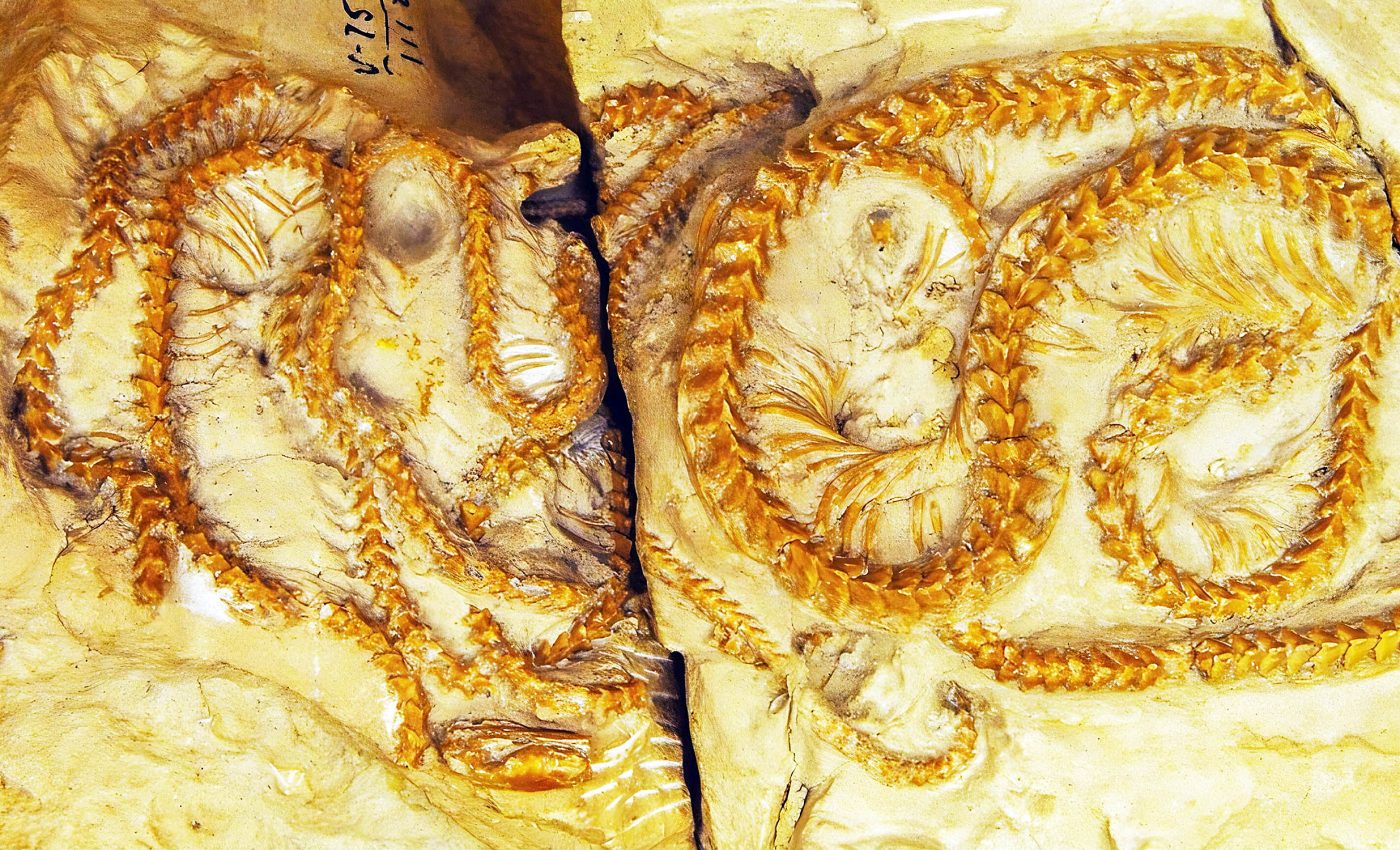
Scientists find 34-million-year-old snake that changes our understanding of evolution
Finding a fossil snake usually means sorting through a jumble of tiny backbones. A lone vertebra here, a rib fragment there, and plenty of guesswork about the rest of the animal. That is why an almost complete snake skeleton excites paleontologists.
Last spring, field crews in western Wyoming uncovered not one but four snake fossils so intact that their skulls, ribs, and tails lay in near-perfect order.
The quartet comes from sediment laid down about 38 million years ago during the early Oligocene, a time when cooler climates were spreading across North America.
The snakes were preserved together in a thin layer of fine mudstone, hinting that they died within hours of one another.
Early lab work linked the fossils to two known genera, but subtler features soon pointed toward something new. Those hints would reshape a corner of the snake family tree.
Oligocene snake fossil quartet
Detailed comparisons showed that the Wyoming snakes differed in jaw shape, tooth arrangement, and vertebral keels from the species they first resembled, Ogmophis and Calamagras.
The differences were consistent across all four individuals, leading researchers to name a new species, Hibernophis breithaupti.
The animals were small burrowers, each only a few feet long, with the largest specimen twice the length of its companions. That size spread offers a rare side-by-side glimpse of juvenile and adult stages inside a single species.
Michael Caldwell of the Faculty of Science at the University of Alberta was struck by the condition of the fossils.
“There are probably, in the world’s museum collections, nearly a million disarticulated snake vertebrae. They are easy to find. But finding the whole snake? That’s rare,” Caldwell enthused.
The four skeletons give researchers a continuous map of more than 200 vertebrae – living snakes of similar size can carry 200 to 400 – plus ribs and delicate skull bones, allowing them to see how each part changes from head to tail, something isolated bones can never show.
DNA shows family ties
The team combined the anatomical data with DNA sequences from living snakes to work out evolutionary relationships.
Their analysis placed Hibernophis close to today’s boas, a diverse family that includes tree-climbers, sand-swimmers, and massive constrictors.
“We learn quite a bit more about Boidae evolution in the broad sense,” Caldwell noted. “It seems that they probably started out as relatively small-bodied snakes, which is interesting.”
The new genus sits outside the branches that hold modern boa species, suggesting that the boid family had already begun to split into multiple lineages by the early Oligocene.
Growth patterns offer another clue. The smallest Wyoming snake sports a skull barely half an inch long, while the largest shows thicker jaw bones and fused sutures.
That observation supports the idea that ancestral boas were modest in size before some lineages evolved into the giants seen today.
Because Hibernophis adds an articulated spine to the record, researchers can match particular vertebrae to specific life stages.
Hibernating in their winter shelter
The four snakes were curled together inside what appears to be a hibernaculum, a winter refuge shared by many individuals.
Caldwell noted that the arrangement “represents social behavior in snakes, which is something that we don’t often see,” and added, “This is really unusual for reptiles. Of the almost 15,000 different kinds of reptile species alive today, none of them hibernate in the way that garter snakes do.”
The fossil cluster shows that garter-like tactics already existed millions of years ago.

“They can’t regulate their body temperature, so they need to conserve as much heat as possible during winter by forming large masses,” Caldwell explained.
Modern garter snakes sometimes gather in groups hundreds strong. Opportunistic rattlesnakes have also been seen slipping into the throng for borrowed warmth.
The Wyoming discovery hints that communal sheltering arose early and may have been widespread among ancient snakes.
Ash clouds make good snake fossils
The bodies owe their pristine condition to nearby volcanoes that were belching out clouds of ash while the snakes sheltered underground.
The fine particles settled across the floodplain, sealing burrows in an airtight blanket that slowed decay. “They were preserved in a very unusual circumstance, geologically speaking,” Caldwell said.
Layers of ash alternated with pulses of mud washed in by seasonal rains, locking the skeletons into what geologists call the White River Formation, a fossil-rich unit that spans several Great Plains states.
A small flood soon plugged the burrow with silt, keeping the snakes undisturbed until prospectors split the rock. “Fossilization is a rough process requiring precisely the right conditions for preservation.”
With every bone still in place, the quartet shows how vertebrae shift along the spine – a reference that could lead museums to reconsider labels on their loose bones.
The full study was published in the journal Zoological Journal of the Linnean Society.
—–
Like what you read? Subscribe to our newsletter for engaging articles, exclusive content, and the latest updates.
Check us out on EarthSnap, a free app brought to you by Eric Ralls and Earth.com.
—–













